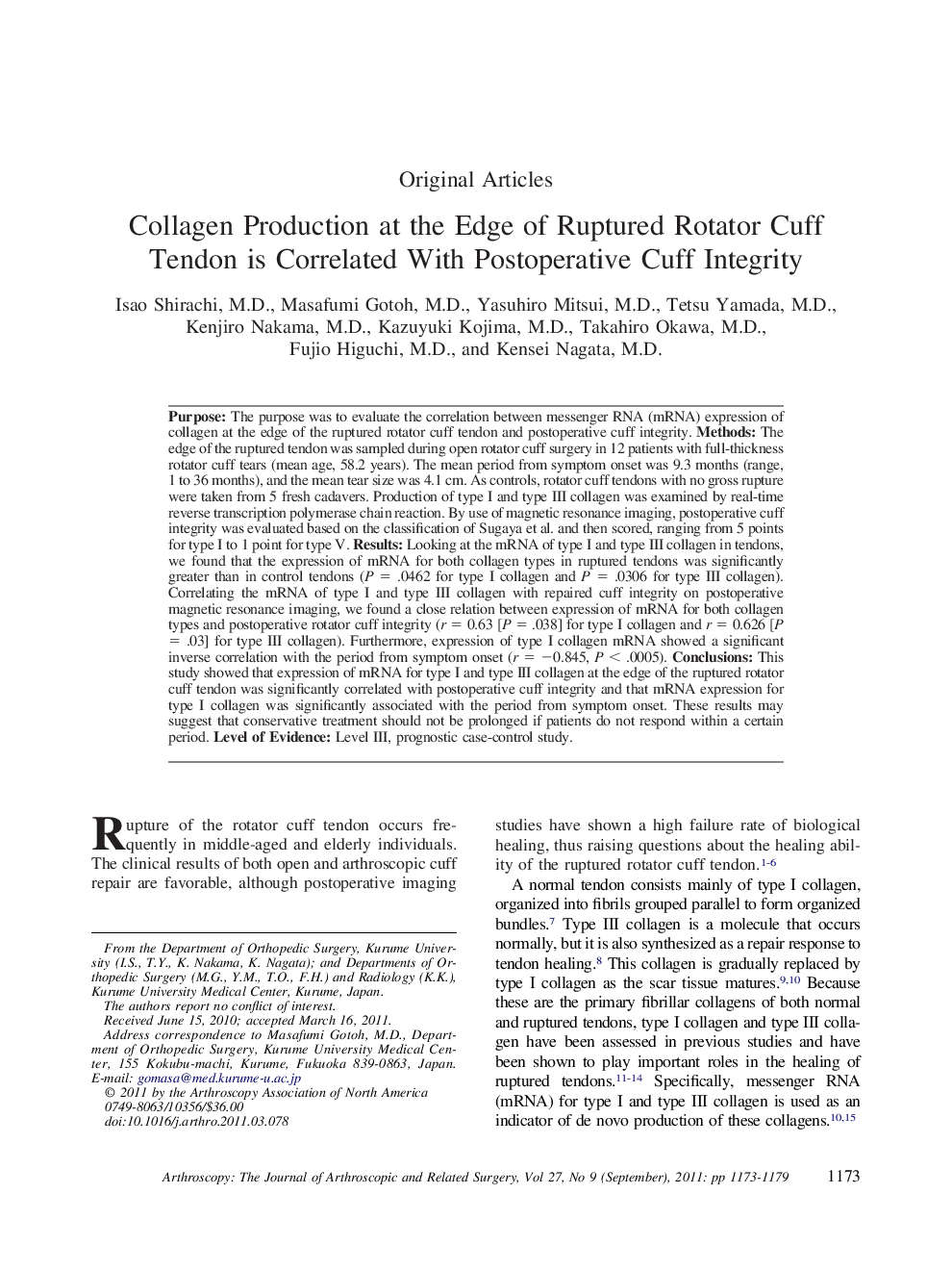| Article ID | Journal | Published Year | Pages | File Type |
|---|---|---|---|---|
| 4044666 | Arthroscopy: The Journal of Arthroscopic & Related Surgery | 2011 | 7 Pages |
PurposeThe purpose was to evaluate the correlation between messenger RNA (mRNA) expression of collagen at the edge of the ruptured rotator cuff tendon and postoperative cuff integrity.MethodsThe edge of the ruptured tendon was sampled during open rotator cuff surgery in 12 patients with full-thickness rotator cuff tears (mean age, 58.2 years). The mean period from symptom onset was 9.3 months (range, 1 to 36 months), and the mean tear size was 4.1 cm. As controls, rotator cuff tendons with no gross rupture were taken from 5 fresh cadavers. Production of type I and type III collagen was examined by real-time reverse transcription polymerase chain reaction. By use of magnetic resonance imaging, postoperative cuff integrity was evaluated based on the classification of Sugaya et al. and then scored, ranging from 5 points for type I to 1 point for type V.ResultsLooking at the mRNA of type I and type III collagen in tendons, we found that the expression of mRNA for both collagen types in ruptured tendons was significantly greater than in control tendons (P = .0462 for type I collagen and P = .0306 for type III collagen). Correlating the mRNA of type I and type III collagen with repaired cuff integrity on postoperative magnetic resonance imaging, we found a close relation between expression of mRNA for both collagen types and postoperative rotator cuff integrity (r = 0.63 [P = .038] for type I collagen and r = 0.626 [P = .03] for type III collagen). Furthermore, expression of type I collagen mRNA showed a significant inverse correlation with the period from symptom onset (r = −0.845, P < .0005).ConclusionsThis study showed that expression of mRNA for type I and type III collagen at the edge of the ruptured rotator cuff tendon was significantly correlated with postoperative cuff integrity and that mRNA expression for type I collagen was significantly associated with the period from symptom onset. These results may suggest that conservative treatment should not be prolonged if patients do not respond within a certain period.Level of EvidenceLevel III, prognostic case-control study.
